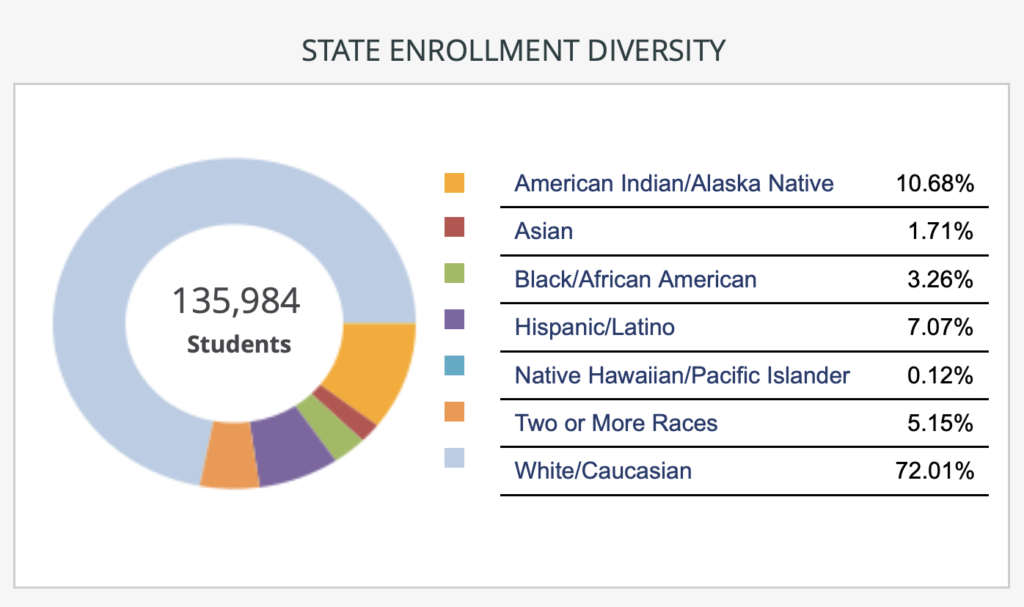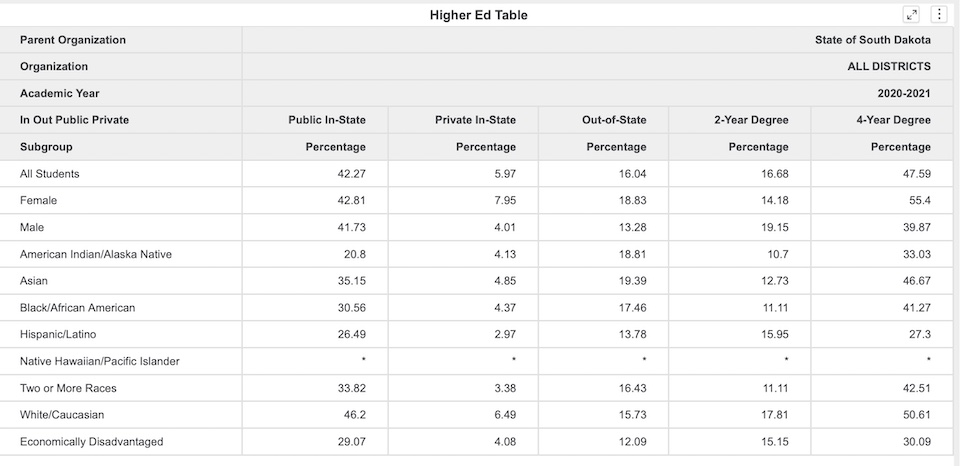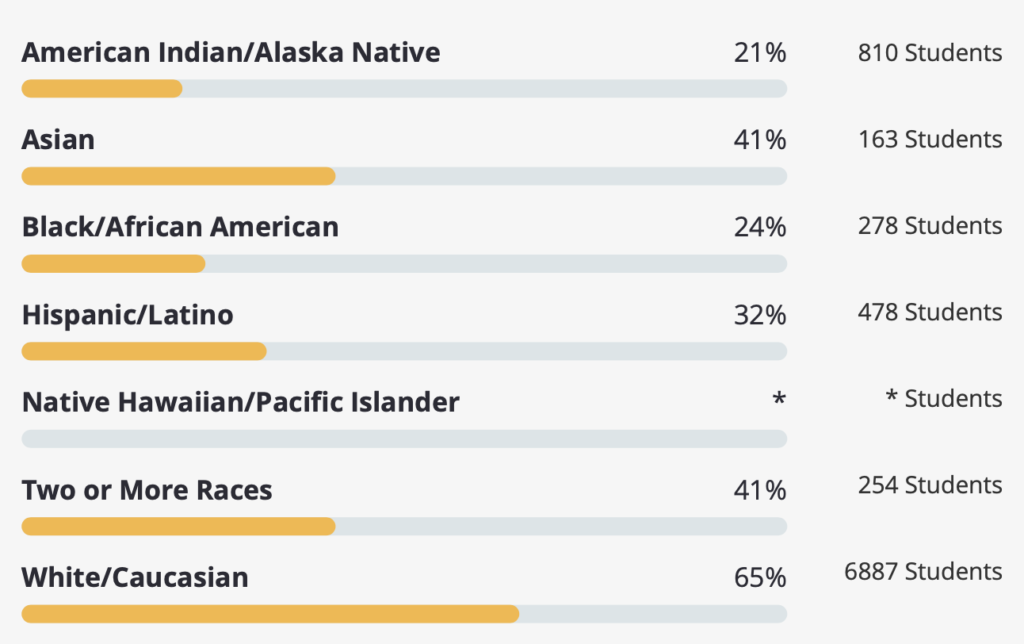From 2010 to 2020, white folks declined from 85.9% of South Dakota’s population to 80.7%. The racial/ethnic breakdown of our K-12 student population given in the new 2020–2021 state school report card indicates that pale percentage will continue to shrink:

Of course, that assumes that those kids all stick around South Dakota. DOE says that last year, South Dakota’s white and Hispanic high school graduates were slightly less likely to seek higher education out of state than grads from other ethnic/racial groups. Slightly more likely to go to college elsewhere were Asian and American Indian students:

Wherever they are going, the DOE says only 57% of our students are finishing high school ready for college or careers. Among white students, that percentage is 65%; that’s the only ethnic/racial subgroup where we’re getting a majority of kids ready for life after high school:

Non-white students make up 28% of our student population, and we are failing to prepare a majority of that growing minority for adult learning and work. I don’t think fussing with the social studies standards or crusading against “critical race theory” is going to solve that problem.
Cory, how is that college/career readiness measured? From my limited involvement in that metric (and even more limited memory), I want to say it had to do with taking dual credit classes and test scores on ACT or a career readiness ACT-type test that many school did not offer at the time.
interesting stuff, cory. i clicked around for a bit on the college and career readiness website you linked because i was curious what factors they measure in determining a student’s “readiness” for college and careers. I found the table they use for that. My next question would require a lot more digging and cross referencing, so I wonder if you’ve already done some of that… what can be shown as possible reasons for the discrepancies among racial groups when it comes to readiness? is there one big school that is underperforming that happens to have a low percentage of white students and that is enough to throw the numbers off? or is the disparity more widely noticeable among schools? i noticed english proficiency considerations on the table, so perhaps if english is a second language for the student or their family, their language adversity alone could pull scores down…? it certainly makes sense that not being a native speaker would be more difficult than life-long english learners / speakers, but how much of a factor does it play compared to other variables? Hmm.
Good questions, Ryan. Hope we see some answers from the many smart readers/writers to this blog!
Of course, fantasized solutions (like trickle-down economics and walls) are the best ideas for those obsessed with fantasy problems.
I would also add that in contrast to elements tested/measured for college and career readiness, I hear from employers (and colleges) that it is the soft skills that they more look for in new hires. Being on time, being responsible, being creative thinkers, being able to work in a group: none of these are evaluated under “career and college ready.”
Good point O. Those are indeed some of the qualities that hiring authorities put the most value in. In addition, it has long been considered that more to anything else, getting a college degree demonstrates a persons PERSEVERANCE more to their possessing any specific utilizable knowledge relevant to any professional level job. Exceptions begin to appear with post graduate-level degrees, but still, perseverance is the strongest character quality to accompany that accomplishment.
In SD’s two largest cities, non-white students will soon make up about 1/2 of the total enrollment. Both districts also have about 1/2 of their students qualifying for free and reduced-price meals.
I can’t speak for Sioux Falls but the current RCAS school board is not doing the job it was elected to do re. supporting these students.
Richard, I agree; perseverance – or grit – should be top of the soft skills list.
I admire our state’s goal of graduating all students. I am still unclear if the students have risen (in perseverance) to that meet that challenge or schools have lowered their expectations (to get under students’ perseverance limit) to meet that challenge.
Well.. from a very early age adults (not just teachers) need to model, teach, and reinforce resilience (or perserverance, if you will) in children. The most important lesson in life is “Roll with the punches”, number 2 is “It doesn’t matter how many times you’ve been knocked down,,what matters is that you always got up”. Number 3 is “Don’t let the mediocre people drag you down to their level..don’t let them win.”Simple truisms we seem to have forgotten to stress in our relationships with children.